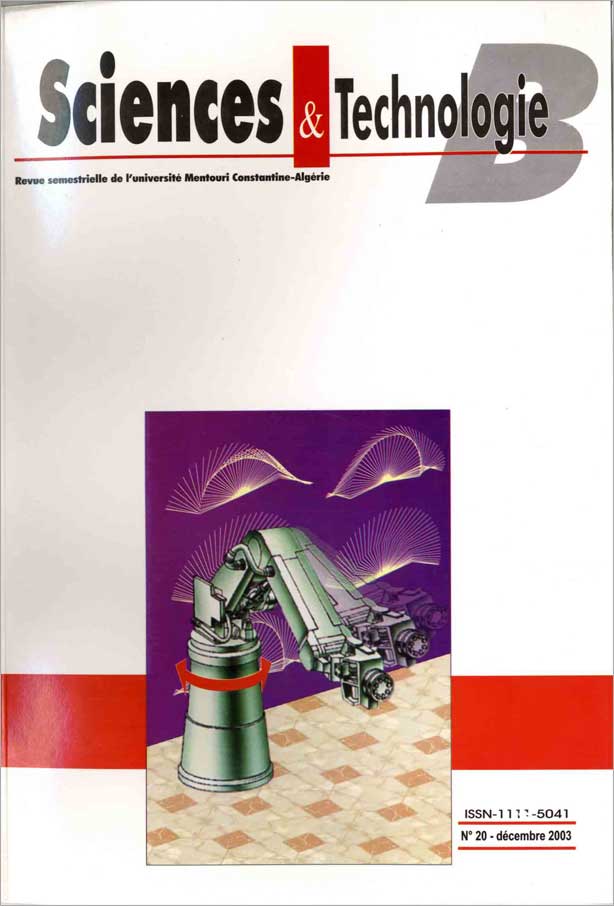IDENTIFICATION OF PVC BEATS BY NEURAL NETS
Résumé
This paper describes the design, training and testing of an artificial neural network for classification of normal and abnormal premature ventricular contraction (PVC) beats in ECG signal. To carry out the classification task, we use the back-propagation (BP) learning algorithm. Two feature selections types were investigated with aim of generating the most appropriate input vector for the artificial neural network classifier (ANNC). The first selected information of each ECG beat is stored as 33-element vector; the second one is then reduced to a 10 dimensional vector using principal component analysis (P.C.A). The performance measures of the classifier will also be presented using as training and testing data sets from the MIT-BIH databaseRéférences
- Goldman M.J., "Principles of Clinical Electrocardiography", 11th Edition, Lange Medical Publications, Drowerl, Los Atlos, California 94022.
- Rowlands D., "Understanding the Electrocardiogram: A new Approach", Churchill Livingstone, Medical Division of Longman Group Ltd, ISBN 0443025061, (1980).
- Abenstein J.P., "Algorithms for real time ambulatory ECG monitoring", Biomed. Sci. Instrum.,Vol. 14, (1978), pp. 73-79.
- Drazen E.L. and Garneau E.F., "Use of computer-assisted ECG interpretation in the United States", in: Proc. Computers in Cardiology.
- Holzmann C., Hasseldieck U., Rosselot E., Estevez P., Andrade A., and Acuna G., "Interpretation module for screening normal ECG", Med. Progress Through Technol., vol. 16, (1990), pp. 163-171.
- Lippman R.P., "Pattern classification using neural networks", IEEE Commun. Mag., (1989), pp.47-64.
- Kartalopoulos S.V., "Understanding Neural Networks and Fuzzy Logic-Basic Concepts and Applications", Prentice-Hall, New Delhi (2000).
- Haykin S., "Neural Networks: A comprehensive foundation", MacMillan College Publishing Company, New York (1995).
- Mark R. and Moody G., "MIT-BIH arrhythmia database directory", Massachusetts Inst. Techno. (M.I.T) (1988).
- Moody G., "ECG database programmer’s guide", Massachusetts Inst. Techno. (M.I.T), Division of Health Science and Technology (1989).
- Lo T.Y. and Tang P.C., "A fast bandpass filter for ECG processing", in: Proc. IEEE. Med. Bio. Soc., 4th Annu. Int. Conf. (1982), pp.20-21
- Pan J. and Tompkins W.J., "A real-time QRS detection algorithm", IEEE Trans. Biomed. Eng., vol. BME. 32, n°3, Mar. (1985), pp. 230-236.
- Thakor N.V., Webster J.G. and Tompkins W.J., "Estimation of QRS Complex power spectra for design of a filter", IEEE Trans. Biomed. Eng., vol. BME-31, n°11, nov. (1984), pp. 702-706.
- Maglaveras N., Stamkopoulos T., Diamantaras K., Pappas C., Strintzis M., "ECG pattern recognition and classification using non-linear transformation and neural networks: A review", International Journal of Medical informatics, 52 (1999), pp. 191-208.
- Nugent C.D., Webb J.A.C., Black N.D., Wright G.T.H., Mcintyre M. "An intelligent framework for the classification of the 12-lead ECG", Artificial Intelligence in Medecine, 16 (1999), pp. 205-222.
- Lin K.P. and Chang W.H., "QRS feature extraction using linear prediction", IEEE Trans Biomed. Eng., vol. 36, n°10 Oct. (1989), pp. 1050-1055.
Téléchargements
Publié
Numéro
Rubrique
Licence
Les auteurs publiant dans cette revue acceptent les termes suivants :- Les auteurs détiennent le droit d'auteurs et accordent à la revue
le droit de première publication, avec l’ouvrage disponible simultanément [SPÉCIFIER LA PÉRIODE DE TEMPS] après publication, sous la licence Licence d’attribution Creative Commons qui permet à d'autres de partager l'ouvrage en en reconnaissant la paternité et la publication initiale dans cette revue. - Les auteurs peuvent conclure des ententes contractuelles additionnelles et séparées pour la diffusion non exclusive de la version imprimée de l'ouvrage par la revue (par ex., le dépôt institutionnel ou la publication dans un livre), accompagné d'une mention reconnaissant sa publication initiale dans cette revue.
- Les auteurs ont le droit et sont encouragés à publier leur ouvrage en ligne (par ex., dans un dépôt institutionnel ou sur le site Web d'une institution) avant et pendant le processus de soumission, car cela peut mener à des échanges fructueux ainsi qu'à un nombre plus important, plus rapidement, de références à l’ouvrage publié (Consulter The Effect of Open Access).

